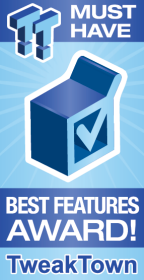
The Bottom Line
Introduction
Over the last few years, Buffalo has made great strides bringing its NAS platforms up to date with the latest hardware. That said, its software has always been slightly behind the curve until mid-2018 when they revamped their OS for a more updated dashboard with new features. One of these new features to debut with the TS6400 is a remote management feature along with snapshots.
The TS6400 1U rackmount and desktop solutions feature the same hardware platform consisting of a Denverton Intel Atom C3538, paired with 8GB of DDR4 ECC memory. The 6400 only comes in a four-bay platform supporting SATA6Gb/s with capacity options of 16 and 32TB.
Seagate is the chosen drive provider as of this review supplying four Ironwolf NAS hard drives. Further specifications offer two USB 3.0 ports supporting 5Gbps connectivity along with two 1Gbe ports and one 10Gbe port.
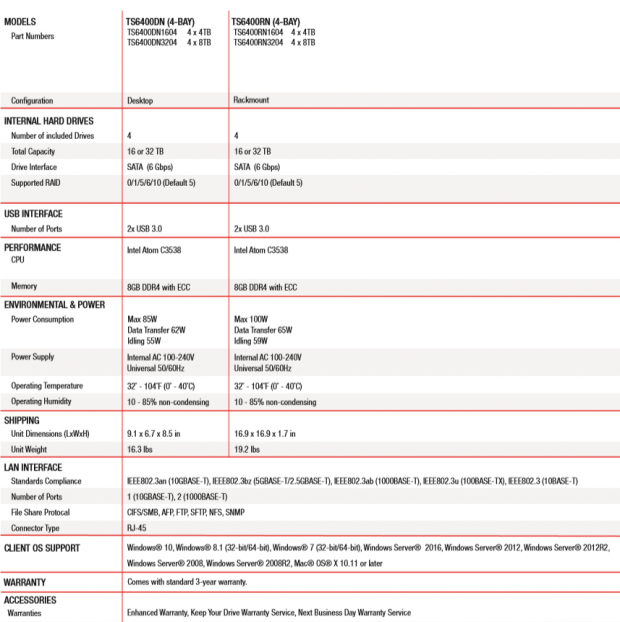
MSRP of the 16TB TeraStation 6400RN comes in at $2319.99 with a three-year warranty.
Buffalo NAS Appliance
Packaging and a Closer Look

Packaging for the TeraStation 6400 offers a simple cardboard box with a sticker offering model and capacity information.
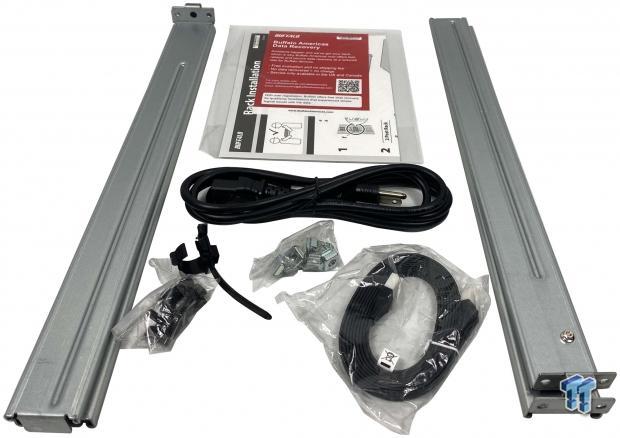
The accessory kit that comes with the 6400 includes rails for setting up the NAS in a rack. Power and ethernet cables are included as well as a cable tie and reading materials.

The front of the unit houses all four bays complete with numbered trays. Across the top of the NAS, we have LEDs for each tray along with the LAN connections. To the far right, you will find a USB 3.0 port.

The backside of the NAS features a VGA console port followed by USB 3.0 and dual 1Gbe. The 10Gbe port comes next and last the power input to the far right.
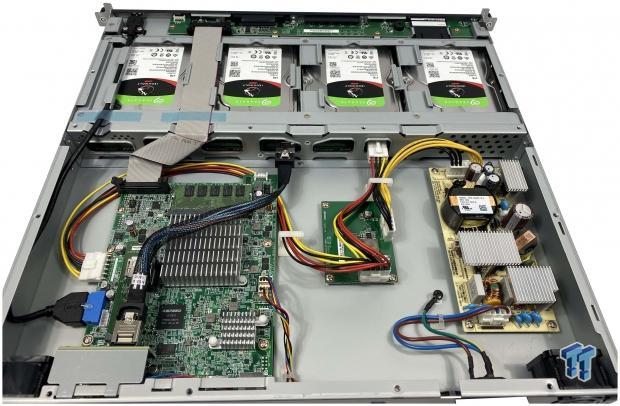
Internally, the chassis leaves plenty of room for the components. We have a SAS daughterboard connecting to the backplane up top, power supply to the right. On the motherboard, you will find the only SO-DIMM slot just above the CPU with an m.2 slot to the left.
Test System Setup and Web Management
Tyler's Test System Specifications
- Motherboard: ASUS Crosshair VIII Formula X570 (buy from Amazon)
- CPU: AMD Ryzen 5 3600 (buy from Amazon)
- RAM: Corsair Vengeance 16GB 2x8GB DDR4 3600 (buy from Amazon)
- Cooler: Corsair Hydro H60 (buy from Amazon)
- Case: Corsair Carbide 275R (buy from Amazon)
- OS Storage: Corsair MP600 1TB (buy from Amazon)
- Power Supply: Corsair RM850x (buy from Amazon)
- OS: Microsoft Windows 10 (buy from Amazon)
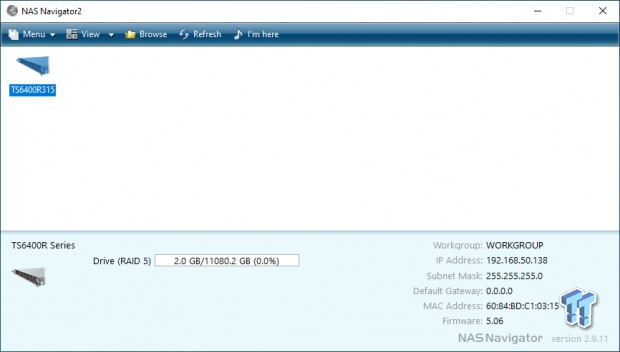
Buffalo uses NAS Navigator2 to aid in the setup, as seen above.
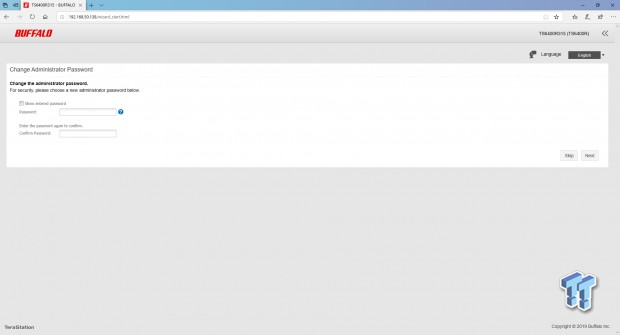
Moving through setup, we start by setting up the admin account.
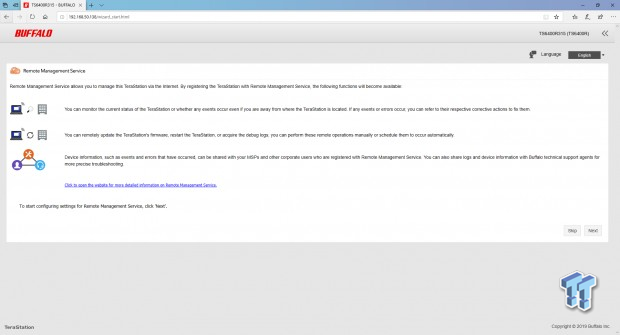
We then come to an advert for the new Remote Management Service for TeraStation appliances. You can follow the link during setup to get more info on this service.
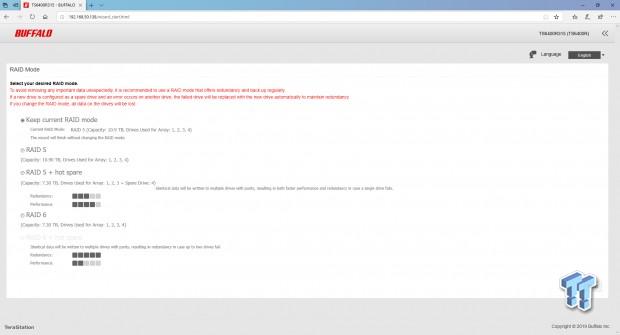
The TS6400RN was delivered in RAID5. Other options include RAID6, RAID 10, and RAID 0.
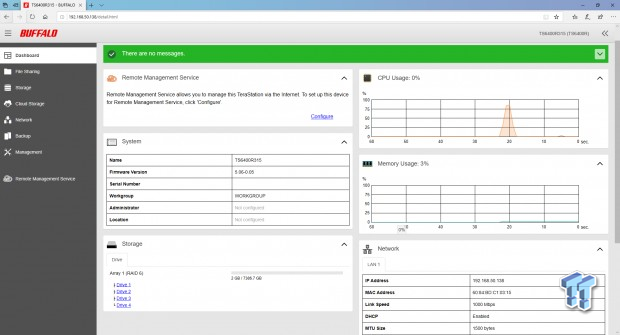
The 6400 takes full advantage of the new software platform. At the top, we have Remote Management, with system and storage below and system usage to the right.
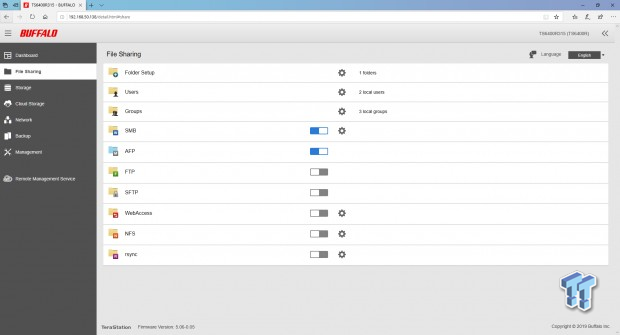
Moving down the sidebar, we have File Sharing, which includes shared folder setup, users and groups, and file services such as SMB, AFP, and NFS.
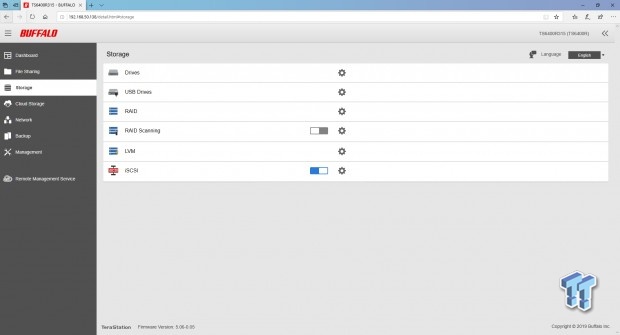
The storage menu offers information on the drives, including internal and USB connected solutions. RAID and the Logical Volume Manager. iSCSI can be found at the bottom.
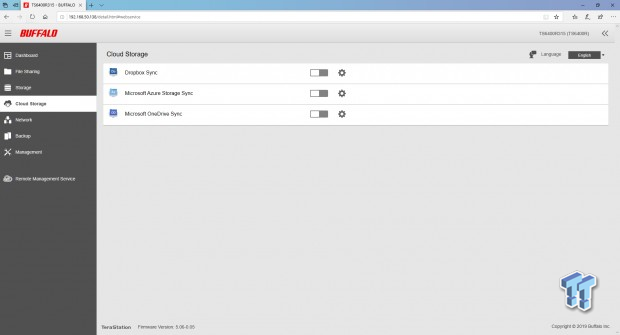
Cloud storage options include Dropbox, Azure, and OneDrive.
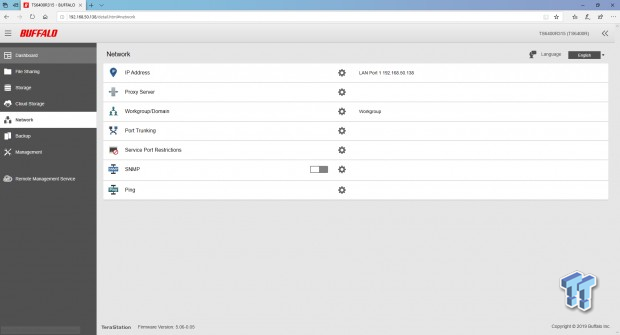
Network options include workgroup and domain setup, IP address configuration along with SNMP, and Port Trunking.
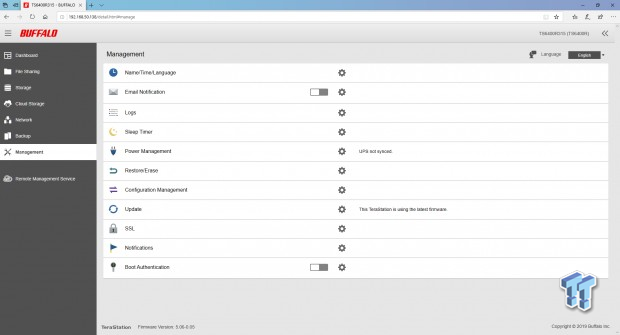
Management includes options for setting up notifications, sleep settings, and power. You can also restore/erase configs for the NAS and update the firmware.
Folder Snapshot Setup
Snapshot Setup
Snapshots have become increasingly popular with NAS platforms as they enable the end-user or business to have "backups" of user folders and files should you encounter unintended user error deleting files or ransomware, where snapshot can help fill the gap to protect you without disrupting business continuity.
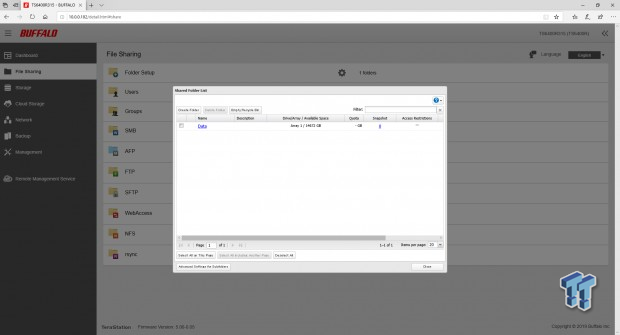
Snapshot setup is straight forward but does take a few steps. We first go to our shared folder list, above we have just one folder named DATA.
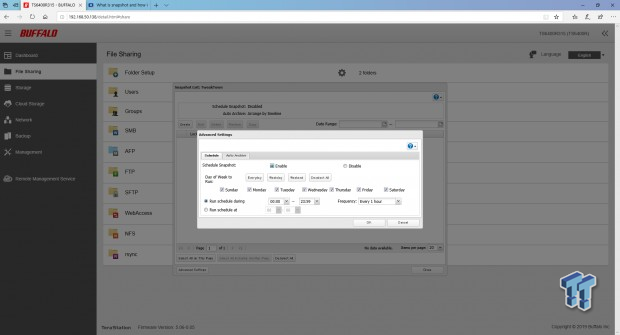
We click on the blue 0 under snapshots to bring up the menu above. From here, we can enable scheduled snapshots, choose the days of the week and time.

The Auto Archive tab allows you to set up how to name the snapshot files, versions, or timestamped.
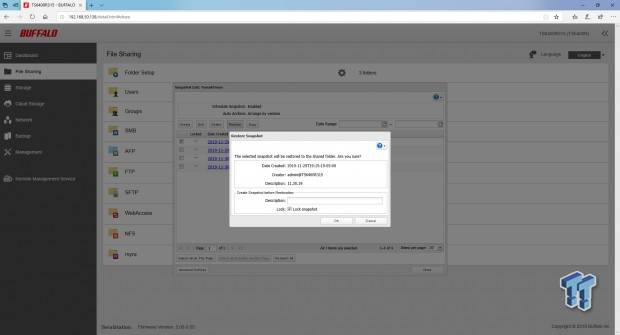
When you need to restore a folder from a snapshot, you simply go back to the shared folder list, click the number under the snapshot, check the box and click restore.
Benchmarks -Sequential Performance and Workloads
Sequential Read and Write
Our Sequential read/write workload is centered on 128K transfer sizes at QD32. I ran testing for the Buffalo TeraStation 6400 with the included drives over a 5Gbe network.
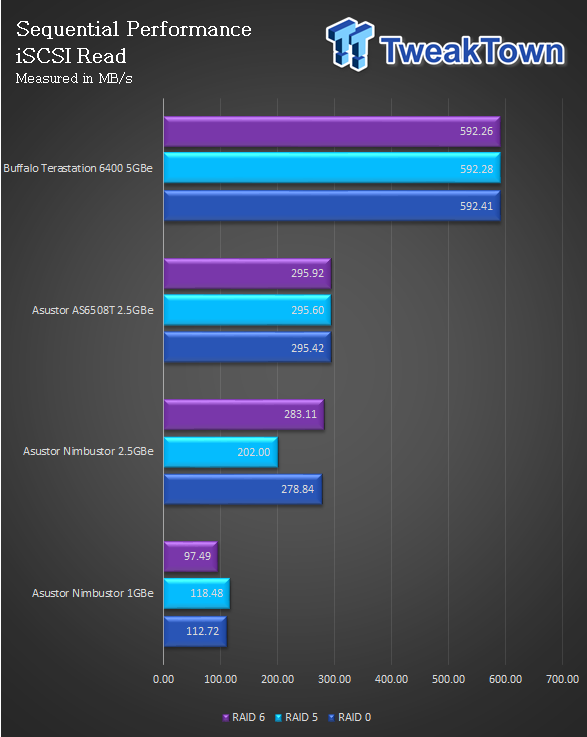
With all three RAID modes hitting the limit of the 5Gbe connection, performance tops at 592 MB/s read.
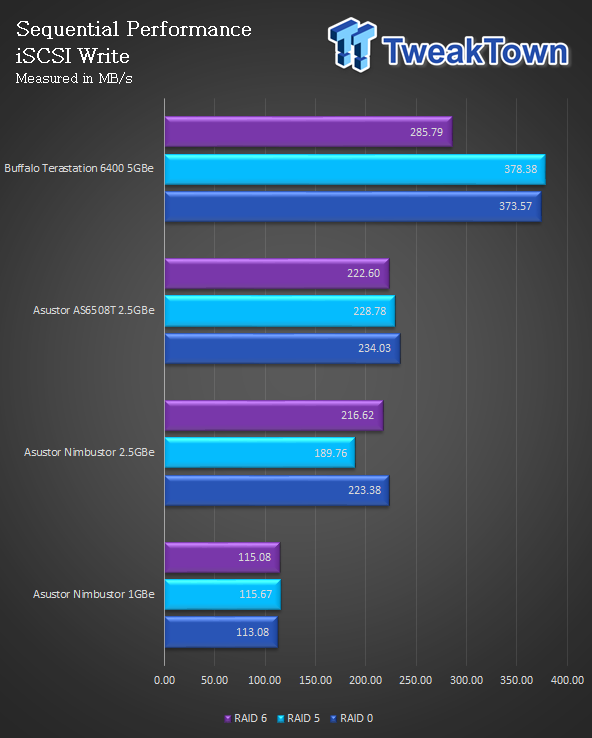
Write performance is slightly lower; 373 MB/s for RAID 0, 378 MB/s for RAID 5, and 285 MB/s for RAID 6.
Workloads
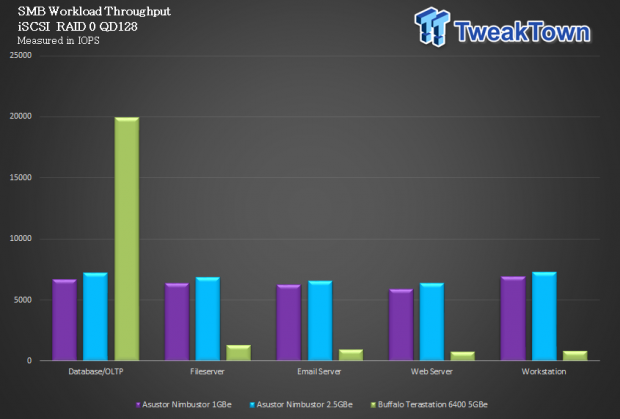
Workload testing shows fantastic results with Database reaching 20K IOPS. The other four workloads hovering between 1700 and 2000 IOPS.
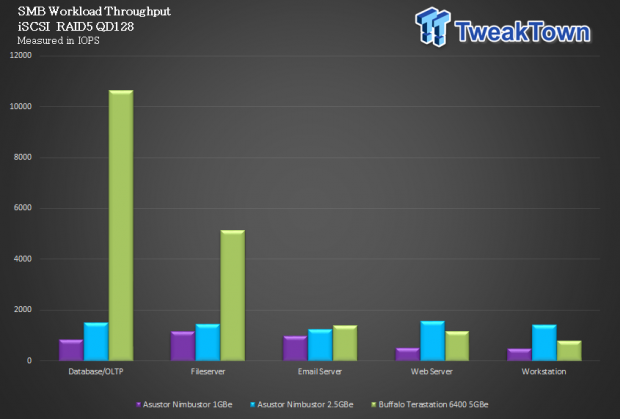
RAID 5 gives Database another 10K IOPS with File Server right behind a touch under 6K IOPS.
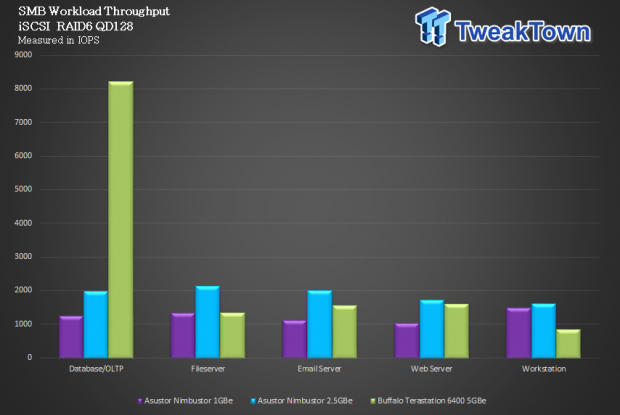
RAID 6 favors Database at 8K with the other four between 1 and 2K IOPS.
Final Thoughts
Buffalo has done a solid job with the TeraStation 6400 both in hardware choice, which happens to be the same configuration being used by ASUSTOR with our recently reviewed Lockerstor platform and Synology with its DS1618+ and DS2419+, and the steady updates to features consumers want. Most notably in my testing was the addition of snapshots, which has become a must-have for my own data.
Build quality is quite good with your standard 1U metal enclosure, included rails for mounting the NAS simplifies the installation process and information center along the top of the drive trays offers all the needed info with LEDs.
The performance was on par with expectations, and having tested this unit with 5Gbe in our new test system, there were a few occasions where we did reach the limit of the interface. That said, the sequential performance was quite good, especially in read operations, while write performance at its lowest was 285 MB/s in RAID and 373 MB/s in RAID 0. Workload testing again showed this hardware loves Database workloads, reaching 20K IOPS in RAID 0, 11K IOPS in RAID 5, and 8K IOPS in RAID 6.
Pricing of the TeraStation 6400RN is coming in hot with an MSRP of $2319.99 for the 16TB model and $2899 for the 32TB model. That said, these units do feature a three-year warranty and are TAA compliant, making them a viable option for government agencies while homelabbers and consumers may want to look elsewhere for more budget-friendly solutions.

